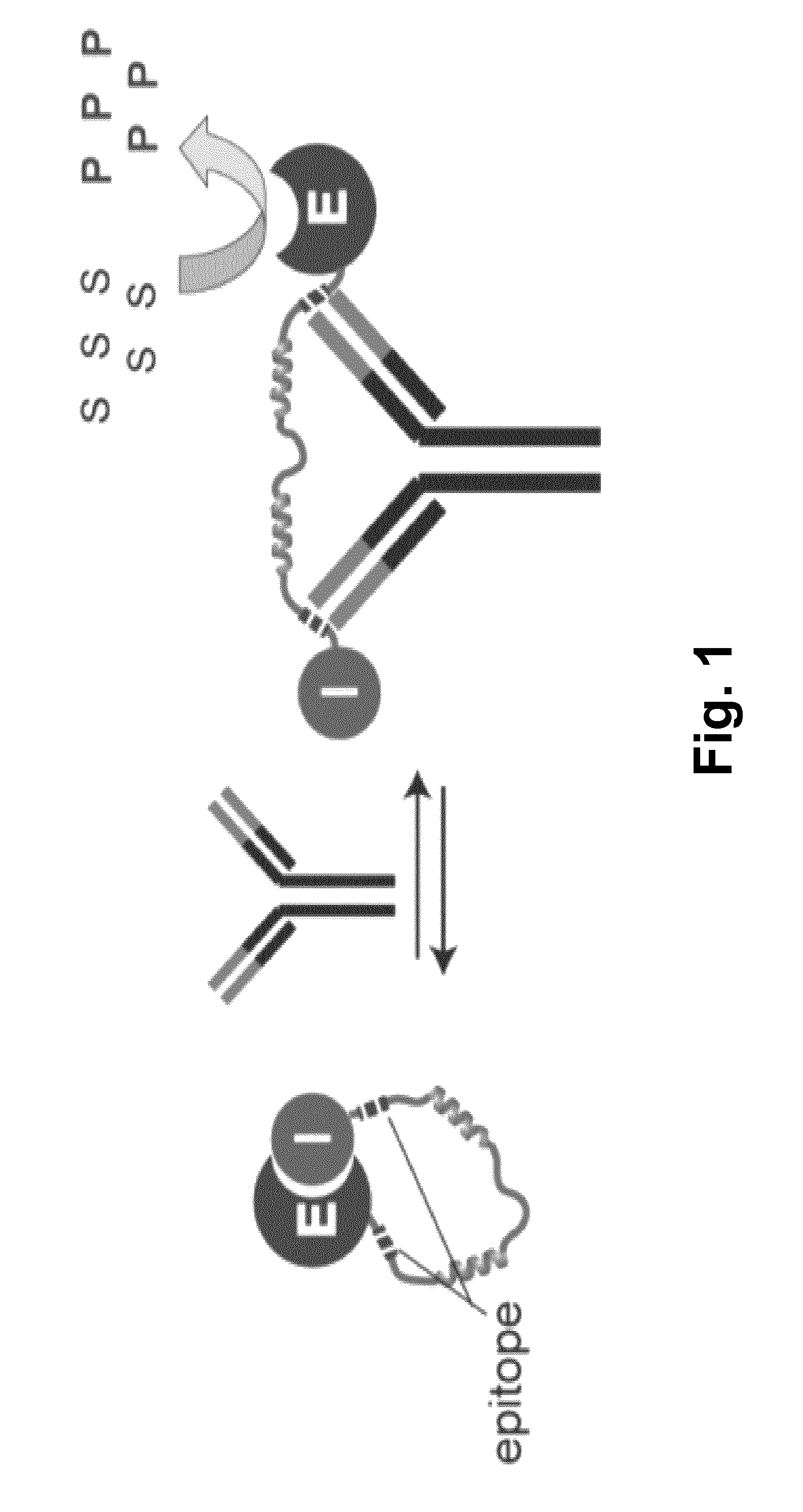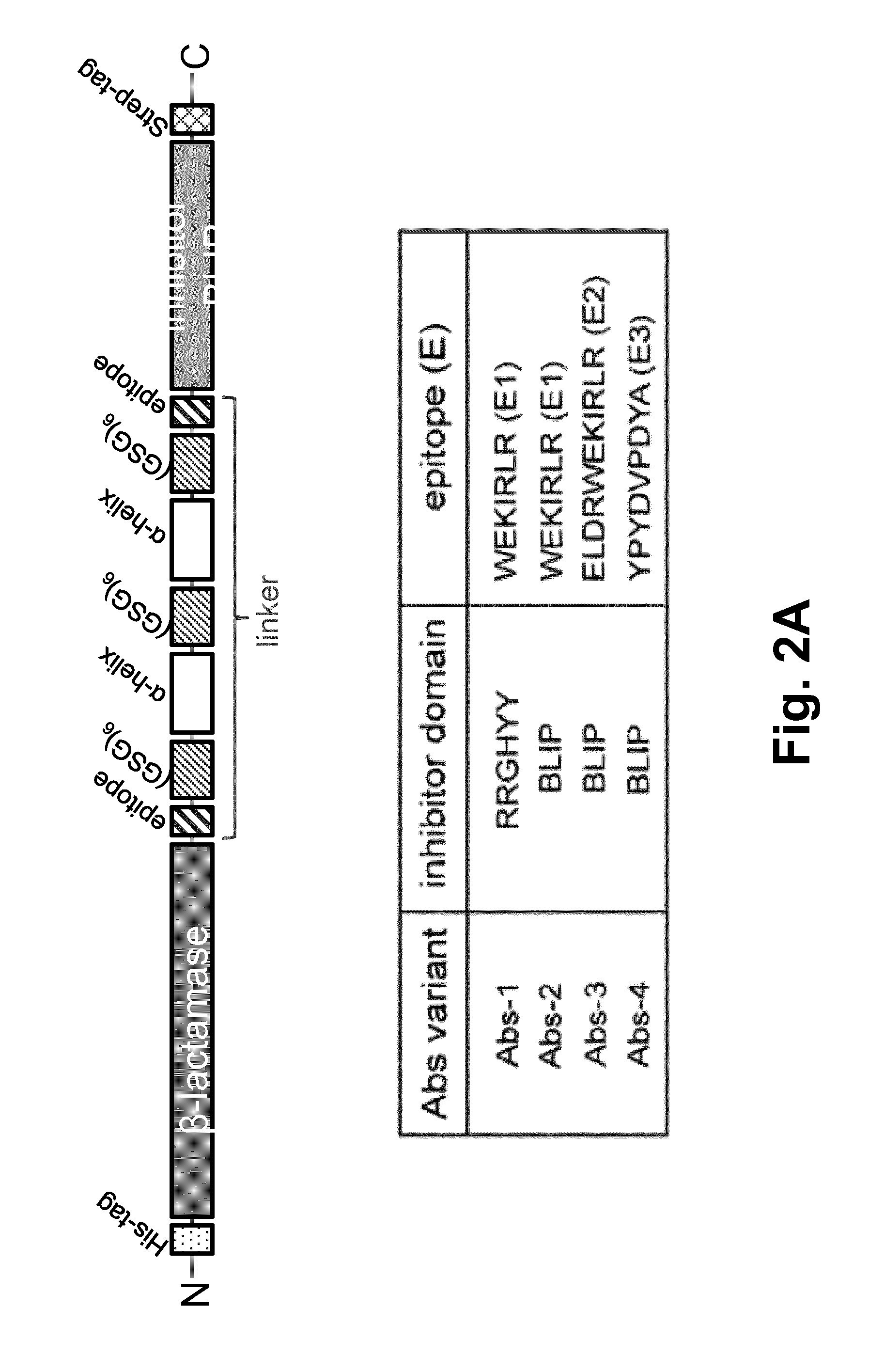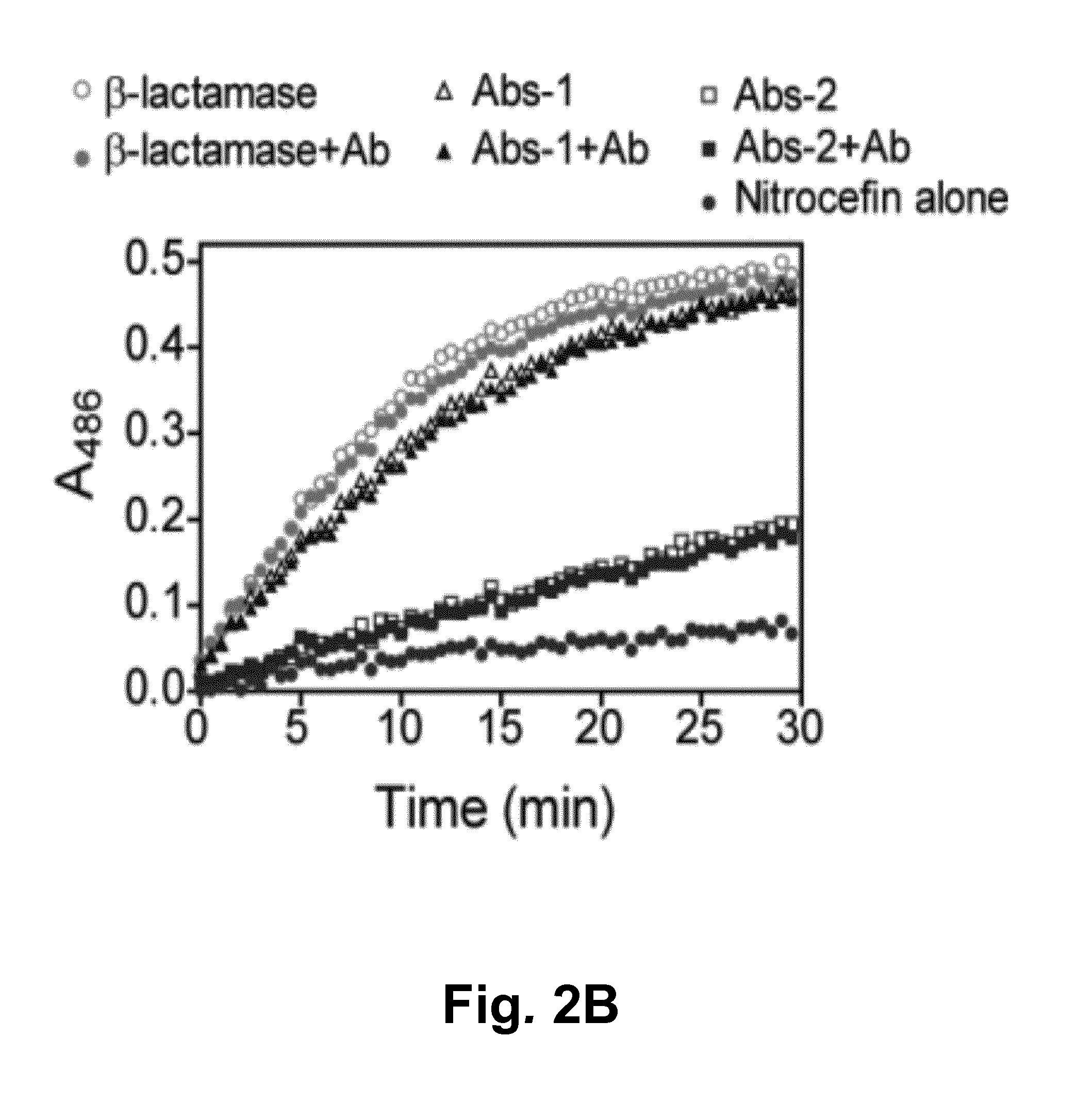Switchable Reporter Enzymes for Homogenous Antibody Detection
a reporter enzyme and homogenous antibody technology, applied in the field of antibody detection, can solve the problems of limiting the application of the reporter enzyme in low-cost point of care diagnostics and high-throughput screening, and achieve the effect of increasing the activity of the reporter enzyme and reducing the amount of the reporter enzyme forming an intramolecular complex with the inhibitor domain
- Summary
- Abstract
- Description
- Claims
- Application Information
AI Technical Summary
Benefits of technology
Problems solved by technology
Method used
Image
Examples
Embodiment Construction
[0060]The switchable reporter enzymes can have a full length reporter enzyme that is conjugated to an inhibitor domain via a long semi-flexible linker, forming a catalytically inactive enzyme-inhibitor complex in the absence of its target antibody (FIG. 1). Peptide epitopes specific to the antibody of interest are introduced in the linker, one is next to the enzyme and the other adjacent to the inhibitor. Binding of a single antibody to both epitopes separates the enzyme-inhibitor complex, resulting in an increase in enzyme activity.
[0061]The feasibility of the technology of this invention was demonstrated using β-lactamase as a reporter enzyme. The affinity between this β-lactamase and its inhibitor protein BLIP was designed to yield single-protein reporter enzymes that allow detection of pM concentrations of specific antibodies using simple colorimetric or fluorescent read-outs. Moreover, because of the modular architecture of theses sensors, we show that epitope sequences can be ...
PUM
| Property | Measurement | Unit |
|---|---|---|
| equilibrium constants | aaaaa | aaaaa |
| intermolecular dissociation constant | aaaaa | aaaaa |
| concentration | aaaaa | aaaaa |
Abstract
Description
Claims
Application Information
 Login to View More
Login to View More - R&D
- Intellectual Property
- Life Sciences
- Materials
- Tech Scout
- Unparalleled Data Quality
- Higher Quality Content
- 60% Fewer Hallucinations
Browse by: Latest US Patents, China's latest patents, Technical Efficacy Thesaurus, Application Domain, Technology Topic, Popular Technical Reports.
© 2025 PatSnap. All rights reserved.Legal|Privacy policy|Modern Slavery Act Transparency Statement|Sitemap|About US| Contact US: help@patsnap.com



